HIStalk Interviews Jonathan Bush, CEO, athenahealth
Jonathan Bush is CEO, president, and chairman of athenahealth of Watertown, MA.

We’re into the nuts and bolts phase of HITECH and the checks are going out. How are your customers responding to it, what are your opinions of it so far, and where do you think it’s going?
Well, you know, they’re doing their thing. I guess there’s a lens of how is Nation doing. Does Nation like it? My sense is that Nation got a little something that Nation didn’t want, which is that Nation didn’t want vertical integration and more pricing power as the cost of healthcare goes up. You know they wanted more buying power, not less.
So Nation might not be psyched about that, but the vendor world, whether they live in the cloud or don’t, are happy at the stir and the flurry of energy and excitement around information technology. When someone’s whipping you from behind, you might not make the coolest, smoothest, most permanent of decisions. There’s going to be a lot do-over. I see grounds for a lot of do-over right now, which is, I think, exciting. Unfortunate, but exciting.
For example, at the JP Morgan conference, the most interesting data point I heard in the entire conference … they had a not-for-profit hospital track and the JP Morgan guy who runs the desk that floats the bonds that hospitals use to finance their activities — these not-for-profit hospitals, you know, they depend on good bond ratings — he said that between 30% and 45% of all the bonds he’s floated in 2010 are underwritten by software, but the life of those bonds, the payback period, is between 10 and 15 years. I don’t know. Do you, Mr. HIStalk, have any 10- to 15-year-old applications running on your D: drive there?
What I see is the perfect sub-prime mortgage crisis type in store. It’s just the beginning. It’s just the drop in barometric pressure that’s causing the weather systems to move. You know, the birds are still flapping their wings, the fish are still jumping, Clooney isn’t being turned upside down in his boat yet. But it’s a perfect set-up.
These physician subsidy deals will certainly not last at current levels. The difference between those physician subsidy deals this time around and the time around before – which ended around ’95 – is that this time, significant system investments are being layered on top to fuel the marriage. I expect those kids to be orphaned. That’s wonderful for athena at some level because all the Athena clients aren’t putting out any capex on these things and none of their bonds have IT inside of them. They will be in a very good place to acquire or pick up off the ground the systems that overextend in this way.
That’s the result of this rush to hit these deadlines. Now, maybe that’s OK. Maybe these mostly weaker, more isolated not-for-profit hospitals are being pushed off a cliff that they were already on the edge of. I don’t know. I don’t have the judgment on that.
Most of our big enterprise clients are for-profit. They were the first ones to find the cloud and value that freedom of the balance sheet that we offer. They had the least problem with the idea of laying off large numbers of billers and medical records clerks, so they represent a large portion of our base. They’re obviously in a position to expand dramatically for the first time in a while as these independent, not-for-profit, more urban systems get strapped.
Hospitals live day-to-day by their capital spending, which is a problem in itself, but they money they’re spending on buildings, electronic medical records, and practices comes as margins are about to get thinner. When you see Loma Linda’s bond ratings slip, you know something has to give. Are hospitals not being prudent or are they overreacting to what they think healthcare reform will be?
Well, you have an interesting confluence. Obama’s policies have been interesting in this way. There’s so much to gain by rallying behind the ACO banner in the form of non-ACO, short-term gain. “This is my chance to lock down my catchment area,” you know. “Inside the ACO, all my Stark rules are relaxed.” It spooked the doctors where they’re ready to reconsider the whole idea of being independent. It works from a pure “driving up referrals” perspective.
I think all of them have obviously the very best of intentions on building the ability to coordinate care more effectively. I don’t think there are any evil … all of the evil that I’ve seen done in healthcare in my 13 years has been done by really good people. That’s one of the great ironies and excitement of healthcare.
I don’t think it’s malicious, but I do think it’s attractive and it caused a free agent season. The rush caused the price at which a physician would switch to full employment to go higher than the physician could ever actually pay back in the form of admissions. I don’t know these numbers cold, but looking at our claims and referrals traffic, I would say that the best primary care doc could do in terms of admissions to a hospital, you know, if you imagine a doc who does zero admissions with Hospital X, and then Hospital X acquires the practice and is now subsidizing the doc. The doc goes to 100% admissions to Hospital X, right? So that’s the best-case scenario.
The most that doc can bring in in admissions – not the most, but you know, a good number for that guy to bring in — would be about a million bucks’ worth of admissions per year. The hospital’s got a 3% margin. You’re talking about $30,000 in contribution to the bottom line, assuming 100% of the admissions are new that they weren’t getting already. Well, the average subsidy is over $100,000 for a primary care doc in this current season, these new compensation deals. So that’s a negative $70,000 deal for the hospital annually, and that’s before the IT investment.
And that’s before the doctor’s schedule tends to, as we’ve seen before … I love docs, I represent them, I’d take a bullet for most docs … and the calendar does tend to lighten up with somebody’s who’s got a rock-solid floor on their salary. I don’t know what it is. It’s just quality, quality. “Don’t ask me to see more patients — what about quality?” Quality suddenly becomes capitalized, italicized.
So, anyway, those are some of the things that I haven’t seen people write about that are going on. Obviously the energy level, the excitement, the interest in ambulatory care by hospitals and by really everyone in healthcare, government … the payers space is an interesting space where payers did not do a very good job in all the healthcare reform debate of putting forward their own solution. We’ve calmed society down and lost a lot of ground now. As they see the hospitals vertically integrate and further erode their own pricing power, their own buying power, we’re seeing a real spike in really serious pay-for-performance where the payer’s saying, “No, no, I’ll be the ACO. I’ll coordinate all that. I’ll pay the bonuses and you can still be independent because I really want you to feel just as good sending the patient to a non-hospital based surgery center as you would to a much more expensive hospital-based surgery center.”
The payers are late for the game, but certainly the most provider-side oriented payers like Humana are now fully headlong into the ambulatory care space. In fact, I think the most interesting announcement of all – unfortunately it was not during 2010, but they must have been working on it – was when Humana bought Concentra. So Humana now is full-on, back to the future, employing 800 docs. The athena deal was a 2010 deal, where they are talking about paying 25% more to primary care doc that remain independent and stay on Humana-sponsored systems like athenaNet versus the hospital sponsor’s system. Very interesting.
What about the insurance companies buying the HIE platforms like Medicity and…?
Ah, another good example. Not sure what they’re going to do with that bad boy, but I’m not very close to either one of those companies. I really like the leadership. I love Ron Williams and I really like Kipp Lassetter a lot, so – I don’t know the new guy at Aetna at all though – so they must have a good idea there. Clearly it had something to do with making patients able to leave the borg. There’s the cloud and there’s the borg. Most HIT investments have been on the borg side of things. Mostly $100 million, “everything is included as long as you stay inside the biosphere” IT systems are not good for buying power. They’re not good for patient power. They’re good for the traditional, more paternalistic approach that most of society is still very interested in.
Do you think that there’s any chance that ARRA will be repealed or that HITECH will be de-funded?
Oh, no, no, no… No, no, they’re going to do their ritualistic dance and then they’re going to begin … this is the first beating. Then there’ll be other beatings. Then the lights will be on at night and then the dog barking and then the waterboarding. These guys know how to do this.
This is the first of many major congressional movements to chip away at and personalize and just whittle down the more Malthusian forces that have been in government since 2008. Basically, it’s not that there’ll be any … unfortunately I wish there’d been more reasoned argument against the more micro-managerial approach and for a more… but instead they’ll just be random beatings of these well-meaning Malthusians, you know, until they just get tired and go back and take a nice job on the other side of the revolving door for a while, if only to rest.
We’ve seen it before. I mean, the Republicans had it in a mid-term and Clinton had it after his mid-term. You know, it’s just one of those things that people do. It’s funny because it will certainly make the Republicans look ridiculous and probably get Obama his seat back if they’re as aggressive as I imagine they will be, which is ironic of course, but the way things work, you know.
It doesn’t seems that EMR certification was as much as a barrier as people said because it seems like every system I’ve never heard of suddenly keeps becoming certified. Do you think the bar has been set too low or does certification maybe measure the wrong thing since it doesn’t seem to really distinguish between no-name products and ones that are household names?
This again is the problem with the Malthusian approach, where you get all these detailed things that you’re going to make people do, and then no one does them. Now what do you do? My three-dimensional model of the universe that I so carefully and lovingly built actually doesn’t work because no one is doing it.
In this case, the specific problem was this was part of the ARRA. This was supposed to be a set of shovel-ready projects. The mandate is to spend the money. It’s not to incent people who cross a bar, which would be a very cost-effective program because they could set the bar where it really ought to be and no one would pass, and we’d really separate the wheat from the chaff.
But that’s the rubric this program was authorized under. This was, “Get the $30 billion in the economy.” What has been going on since the original ARRA bill passed was the bar has been lowered and lowered and lowered until Oompa Loompa could jump it, so that it could be jumped by everybody, right? And that was their mandate.
In the very end, you’ve got this bar laying on the ground with this doctor who’s got … you can imagine the guy who qualifies for the ARRA and how much work he’s done and what he looks like. The guy who came in last place that still passed. You know, you can do that cartoon at HIMSS [laughing]. He’s got a copy of Microsoft Word, you know, and the password feature turned on, you know… a couple of little whizbangies and he’s wearing a Sony Walkman with the Dolby button turned on. I can see this guy. He’s like [laughing], and he’s like, “What? What, I’m fine! I’m totally Meaningful-Use certified. Yeah, absolutely!
But what are you going to do? Their job was to get the money out the door. Now they’re saying, “Next time around, the bar is going to be much higher. This 2011 thing was just a shot across the bow. Wait until you see what we’re going to do in 2012. Oops, no, we’re not going to do anything in 2012. Wait until you see what we do, God damn it, it’s going to be amazing in 2013. The bar’s going to be sky-high! No, you’re going to need a pole vault to get over the bar in 2013.” And so the guy’s, “Sure. Maybe.”
In fact, if other forces are in play and people get much more able to engage in the verb “health information exchange,” I fully believe that they will end up with a more aggressive set of rules. The nice thing about all of it is they … it is a rule-making rather than a Congressional act, literally an act of Congress to the get these things moved around. So if society somehow gets all online, then sure, they’ll try to move the bar up. But remember, society’s buying mostly legacy IT, which does not exchange information outside of the server. It’s unlikely the bar will be terribly much higher in 2013 than it is today unless athena Community works or some of these other more social network type concepts take hold.
Even with what limited work is required to meet the first Meaningful Use stages, there’s already is the first pushback that says, “Hey, it’s too hard, it’s too fast, I’m not ready.”
Can you believe that? I mean, can you believe that? This is the greatest argument against public schools. That’s been going on for decades in our public school system. “Really? You can’t pass that one, Jimmy? That’s one crab and there’s two crabs in the basket. There’s one crab and the … now how many crabs are in the basket?”
The whole premise is to get people hooked with the easy money and then move them up. But what happens if everybody opts out even on the easy money?
I think there’s that, but more importantly, if you latch people into easy money by getting them to blow their wad, financial and operational, on offline technology, you know, non-exchange technology, they are interoper-able, but not interoperating with anyone. There’s one argument that says that no breath is lot better than bad breath, that if you actually put everybody on static systems that are attached with the obvious motive of keeping people stuck inside that system environment – keeping patients inside that system and referral environment – you run the risk that it will be very hard to then wake that system up and get them to make that system talk to others.
This magical talk that you hear Halamka going on about middleware is … you know, this is the guy who manages to be on giant billboards but can’t exchange information with the hospital across the street that teaches with the same medical school and the same doctors for 100 years. I love the guy and I’m sure he’s got perfectly good reasons why literally one side of the street can only exchange information via paper airplane. But you know, it’s pretty amazing.
Fundamentally, if you’re not in the cloud, if you aren’t in a system, and… the cloud I think is a business model as well, it’s not just if the technology uses browsers or whatever else is… It’s the underlying incentives to everyone who plays ball, mitigate, correlate profit with exchange to give in more exchange. The doctor makes more money in an exchange setting if they do more exchanges. If the hospital makes more money in exchange setting, they’re going to do more exchange, right? The IT vendor or the cloud and service vendor make more money with successful exchanges. Are you going to be more successful with exchange? It’s that simple. Certainly that’s the intention of the government is to create that, but right now, in a way, one very much seems to be oriented in an exchange prevention initiative. Everybody’s got to be inside my biosphere.
Vendors are using this opportunity to rebrand themselves. Allscripts claims it’s an open system. Every vendor who used to be SaaS now says they’re cloud-based because it sounds cooler. Now vendors are saying that private interoperability among their own customers is exactly what the market needs, that you don’t need all this outside stuff, just let Epic hook everybody up …
Yeah, yeah — private interoperability. That was like the guy I watched, the CEO of Kaiser, and the panelist says, “Now that you know about the cloud, are you sure you would have spent that money on Epic?” And he said, “Oh, we have our own cloud.” I mean, you can’t have your own cloud. The whole point of a cloud is that it’s part of the universe, it’s not a thing that you … can you see him there, like with a smoke machine from the disco room? You know, “It’s my cloud!” It’s just so perfect.
I don’t know if he doesn’t get it or just it was so embarrassing in front of a thousand people, but you’re right, I mean, what’s he – and you know, it’s been very hard for athena because we work for our customers, and it’s our customers… as the employer, if our docs are actually not organized as independent groups, our job is to work for that hospital, to make that hospital successful. Now, I believe — and our hospital clients believe — that the slightly passive-aggressive strategy of making it technically impossible for a patient to go where they want is not the long-term winning strategy. Being the lower-cost hospital with better coordination, whether the person is inside your biosphere or not, is a long-term winning strategy and the guys that we serve …
I was talking to someone from one of our big enterprise clients. He is so for the open system it’s unbelievable. He can’t wait. He said, “I need to get every low-rent colonoscopy center off the Interstate connected to my hospital because I want to go after every bankrupt union and state employee health insurance fund and take that stuff over at seventy cents on the dollar. But I can’t do that if everything is adding to my fixed cost base.” This is a really brilliant visionary. He’s been around for a while and he’s talking about eviscerating his costs, turning his hospitals into variable costs. That’s a guy who’s going to win.
The HIMSS boat show is coming up. Are you mellower about it now that athena has exhibited there for a few years?
We are bringing down a ladder where you’ll be able to climb up and if you take off your shoes, we will show you our new thrusters. You’ll climb up the ladder, you’ll take off your shoes, you’ll step in, and you’ll go below decks, and there’s going to be our thrusters there. I recommend your readers come and the new athena bow-thrusters will be on display. They are turbo, and they are cloud-based thrusters.
You met Judy Faulkner last year at the HIStalk reception. How was it?
It was your event. Actually, it’s been hard to talk trash about Epic ever since, because I actually think she’s lovely. I think she’s a really inspired person. It pains me. It’s like Old Yeller. It’s a beautiful, beautiful thing she’s built that now has to walk quietly over the hill.
At least it’s cooler than many.
Well, yeah, I know the rest of it’s like making burgers for McDonald’s – no issue with the other animals in going over the hill, you know, moving through rapidly and quickly; hang them on the racks, move them through the line …
With all these changes to healthcare, do you think consumers are gaining control or losing it?
Losing right now. But you know, they’ll be back. We will bankrupt any all-you-can-eat buffet. The food goes. In healthcare, we’ve been figuring new things to put on the all-you-can-eat buffet for 15 years. More — 20 years, 25. Once we neutered the payer – see, we don’t like all this “mean payer beating people up” thing – then the payers stopped and they figured out … first of all, they did a lot of mergers and acquisitions, so they were getting a lot of return on that.
But then also they figured out that now that there are very few in every market, as long as they just pass the full cost increase right through, they actually make more money in the medium and long term as rates go up. So there is the obvious disincentive. When you see an obvious incentive … if you’re one of many sellers, you can’t control — you know, there’s no oligopoly — you want to be the lowest cost player, right? But if you can actually wink or rub your eyebrow or just let the world know that you’re going to just let costs go up. There’s not that many players left to see your body language, and everybody gets into the habit of letting costs go up? Everybody wins. All the different sellers win. That’s exactly what has been going on since Barbara Walters threw a cranky fit from Humana’s headquarters on 60 Minutes in 1994.
This industry doesn’t even need collusion.
There’s not enough players for collusion. You just start moving and you’re so big, “I think I’m going to go to the bathroom now!” And you get your big ass up and start heading down the hall. Everybody knows what’s going to happen next. Nobody has to spy on the stall, you know?
We need more new entrants in healthcare. We need more crazy ones …um, not that I’m crazy, of course, that’s not what I mean, although it’s possible. That consumer power, I imagine, will drive the crazy human ones into the marketplace. Crazy sellers, vending to consumers, as soon as we run over all of the money we’ve newly allocated to healthcare in this last buying spree. Eventually there will be a market, whether it’s a radical reform of the existing market, or whether it’s a market that forms on top of the benefits provided by the health insurance market, like our private school market or the health insurance market in India or UK, where you have a fully functioning, consumer-centric market for a smaller portion of the population that sits on top of the nationalized healthcare system beneath, but acts as a sentinel. It creates the new innovative products, that then pull down through the public school system of healthcare.
That’s what they have in the UK, where they also have the NPfIT implosion, which may be another aspect that we’re headed toward. Do do you think there are enough lessons learned?
We are headed towards a … and it’s a beautiful… What UK healthcare system is is just a really big IDN. What we’re doing is we are blow-by-blow copying the IDN-IT implosion that they did, only they’ve got much more of a European comfort with discomfort that we don’t have. They could stick it patients and put them in queues and stuff like that in ways to make things pencil out in the short term that we can’t do, or won’t do, I don’t think. But you’re absolutely right. That is the playbook for what’s happening right now. The giant RFP … just like the same vendors, same deal, right? The giant purchase, the giant multi-years long implementation and then the wheels coming off the cart.
Athena was the disruptive cool innovator a few years ago. That’s always a tough label to keep. Do you think it’s still athena and what other companies do you think are doing something interesting in healthcare IT?
Gosh, I should know the answer to that. OK, here’s an interesting thing that I’m seeing in terms of new innovators. It’s not vendors of IT, but actual vendors of healthcare services that are the disruptive innovators now. They pay for or build their own IT as part of the offering. There’s this incredible company, OneHealth I think it’s called, based in San Francisco. Incredible, no-wait, concierge private clinic for the masses.
The entire company is built on proprietary IT that looks a lot like athena, but they don’t view that as a thing that you buy and set up with your CIO and send them to him. They actually built the company around that technology. They’ve been iterating their version of athenaNet. It’s going to be a hell of a sell for me to get in there, because they really view themselves as fundamentally a deliverer of a service and the service is fundamentally leveraged by proprietary technology.
That’s an example where the technology is not the product. Technology enables the product. athena figured out a long time ago that we don’t sell IT. These guys figured out that what they’re selling is patient care. They’ve actually got technology as an ingredient to that. We have luckily gotten a bunch of these new kinds of VC-backed, aggressive, disruptive type companies to go to market on the athenaNet backbone in order to better accomplish this open exchange of patients.
So you look at MinuteClinic. MinuteClinic’s accumulating primary care patients much more quickly than those newly subsidized, newly acquired primary care docs at the hospital. They’re advertising. They’re putting their places where people actually are. They’re aggressively going after patients. What they’re going to do is have athena move them into the hospital only when they actually need to go to the hospital; so they’re going to be a non-hospital ACO. They’re going to be an ACO for whom … I mean, I don’t know what their plans are, but I’m seeing this happen. They’re emerging as a really compelling champion of the patient.
Healthcare is one of few industries where there is not a competitive differentiator because everybody uses the same software. Nobody wants to build it, they just want to buy it. But if everybody’s got Epic, then you’re down to nuances of how you use it. Travelocity didn’t go out and say, “I’m going to find some travel reservation software.”
Oh, but didn’t they build a lot of technology on top? Like Kayak. Isn’t that fundamentally different at the DNA level?
I think, though, that the more interesting stuff is the littler companies whose names are escaping me. The general feeling I had, both times, both of the two last Health 2.0s is, we need an ecosystem. We need a place where any little company with a great idea but who could never raise enough money to go and find doctors and sell to them and get them to buy, especially now that they’re of aggregating; to come and sell their wares. Can sell them at the doc level even if docs are employed by larger systems. Whether it’s an iPhone-based EMR that only works for anesthesiologists or a patient-centered pain monitor rap that can be routed into any EMR, or a lot of this homecare stuff that Alere is looking at where you pee in your cup at home and your EMR gets an update and your doctor reads the abnormals and the patient has never shown up at the doctor’s office.
Those are all kinds … another company like this is … what is his name? Roy Schoenberg. American Well. A huge investment in technology, but what they’re selling is, they’re selling extra billing opportunities in the cracks to docs, and they’re selling instant access to a doc over the cloud to patients. So this idea of convergence where we’re selling the ones and zeroes on a disk; or even renting the ones and zeroes over the Internet, is no longer the product — it’s some larger value-added service which is necessarily enabled. The technology almost becomes the store into which you walk to buy the thing, and the thing is the service.
What are your top goals for the company for the next five years?
Form the first hardcore business-to-business social network. I want any doctor on athenaNet to be able to friend any other doctor in the country and be able to execute referrals and authorization. I want to be able to execute the referral and authorization work so that they can move patients back and forth anywhere they want to move with a click and have all the crap-work go away.
How do you do that? Are you building that now?
Yeah, athena Community. We’re actually starting mostly with hospitals, because hospitals are the people that are most interested in fomenting connection with docs. But it works doc-to-doc just as easily as doc-to-hospital. And as hospitals become large acquirers of docs, they become the first eager occupants of this new, cloud-based supply chain. We piloted it, we did an alpha test in 2010, and we intend to do 15 markets in 2011 if we’re lucky. Probably won’t get there, but that’s my goal.
Everybody sees the great parts about being Jonathan Bush: smart, rich, famous. What sucks about being you?
I disappoint everyone I love. I want everybody … I want things to work so badly that I… and I’ve got the false power and then you know, the electrical energy that comes with the title and the brand that it isn’t really me. So I let them believe all the greatness that could be around the corner, and then when it isn’t, it’s like they say about me, “Shit, I really believed that loser.”
I hate disappointing. I hate disappointing my kids. I hate disappointing my wife. I hate disappointing my ex-wife. I hate disappointing my team. And I disappoint them all, all the time, because I dream too far ahead of the curve. It’s exhausting.
But companies like Apple have someone at the top who’s a visionary and is somewhat merciless to their direct reports to make things happen, even though it may not be the most fun place to work if you happen to be one of those direct reports.
Well, yeah. I just personally can’t stand letting people down. When you have to tell someone it wasn’t enough, or you have to miss dinner, it’s just torture for me, I just can’t stand it.
Anything else you wanted to talk about?
No, I’m a big fan. I changed my kids’ vacation with my ex-wife so I can be at the HISsies.
I appreciate that. I didn’t really expect that, so that’s definitely a plus. It wouldn’t have been the same without you, I’ll say that.
It is the single thing about HIMSS that I most look forward to. It’s really fun and I can’t believe you’ve pulled off such a happening after all your .. well, I can believe that it, makes total sense, but it took huge balls and I’m glad you did it.





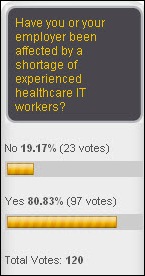
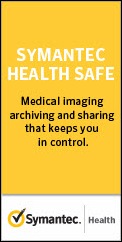
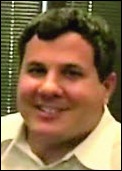

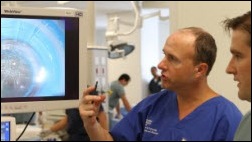
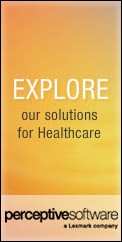


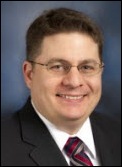



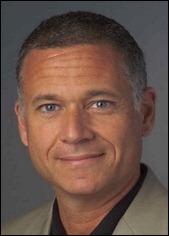





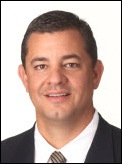
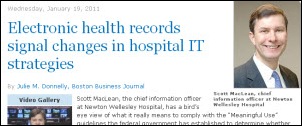


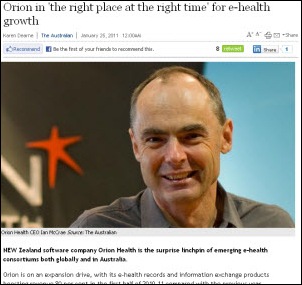










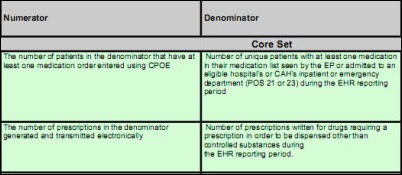



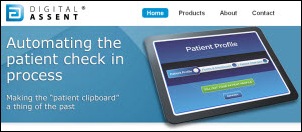




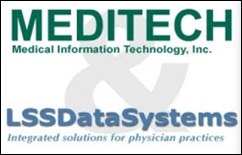
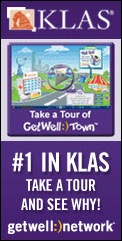




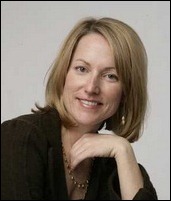



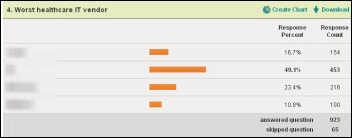
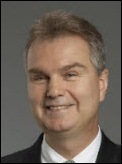
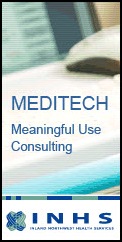


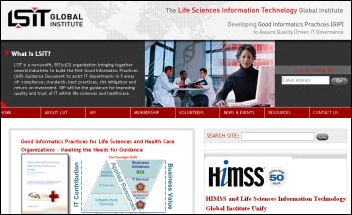
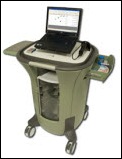






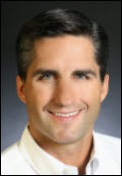

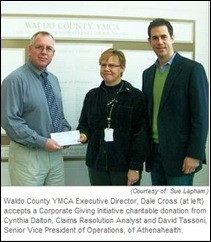

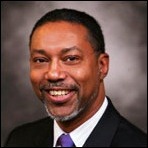



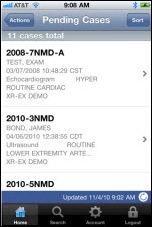
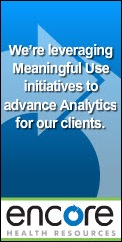
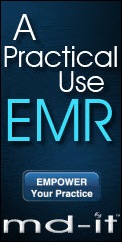




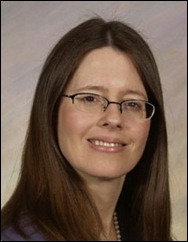


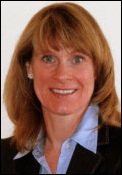
I hear you, and I agree—HIMSS is definitely facing some big challenges right now. The leadership and governance issues you…